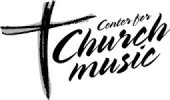| Hymnody |
'Praise & Worship' (CCM) Music |
| Written for congregational singing. |
Written for performance. |
| Words (hymn) and music (hymn tune) are interchangeable, yet the music submits to the words. |
No such flexibility, as the words are subsumed into the music. |
| Long shelf life: Good hymns last for centuries and are passed on for generations. |
Short shelf life: The most popular praise songs last a few years, rarely more than a generation. |
| Four-part harmony and wide musical range, contributing to vibrant congregational singing. |
Limited musical range; sung in unison style that does not lend itself to strong congregational singing. |
| Contains varying degrees of structure complexity derived from its strong musical heritage. |
Structurally weak ans the music is derived from simplistic popular form. |
| Values the interrelationship of melody, rhythm, and harmony |
Melody dominates the structure of the music |
| Represents the liturigical heritage and choral tradition of generations: In this way, hymns are incarnational. |
Reflects an attempt to escape or reject that heritage: In this way, choruses are Gnostic. |
| Reflects a normative understanding of culture; sees music as having inherent value and beauty, something good in and of itself. |
Reflects a relative understanding of culture; reduces musical forms to a utility, as means to 'reaching people.' |
| Pipe organ friendly |
Guitar based |
| Natural acoustics work best |
Electronic amplification a necessity |
| Uses poetic meters |
Poetry and meter not a concern |
| Masculine & robust |
Feminine |
| Maintains aesthetic standards |
Lowers aesthetic standards |
| Antidote to the current cultural disorder |
Reinforces the current cultural disorder |
| Favored by churches with origins in the Protestant Reformation |
Favored by churches of more recent origin--"non-Reformation Protestant" churches. |


